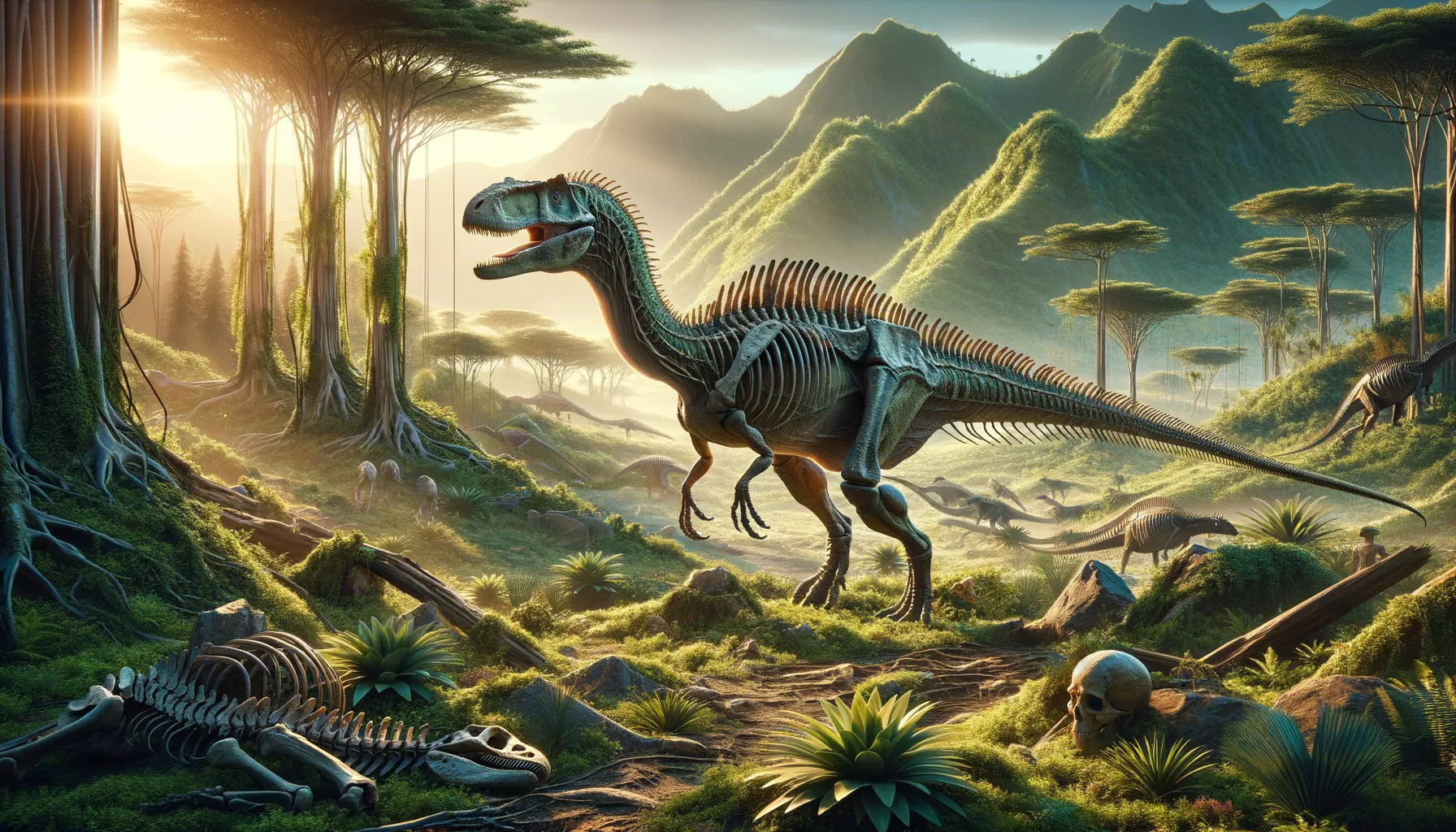
Dryosaurus
Swift and nimble, master of escape.
Period
Jurassic
Length
Roughly 8-12 feet from head to tail.
Height
About 4-5 feet tall.
Weight
Estimated at 170-200 pounds.
Dryosaurus was a nimble herbivore dinosaur that lived during the Late Jurassic period. Its small size and agility were well-adapted for escaping predators. The fossil remains have provided crucial insights into the life and environment during this ancient period. This dinosaur is known for its swift capabilities and distinctive skeletal features, which have been the subject of numerous studies.
Diet
Dryosaurus was a herbivore, primarily feeding on low-growing plants. It likely subsisted on leaves, ferns, and possibly fruits that it could reach with its triangular beak.
Hunting
As a herbivore, Dryosaurus did not hunt. Its interaction with its ecosystem mainly involved foraging for edible plants and evading predators.
Environmental challenges
Dryosaurus faced several environmental challenges, including large predators such as Allosaurus and Ceratosaurus. It lived in areas that were experiencing changing climates, which may have affected the availability of plants. Competition with other herbivores for limited resources was also common, necessitating adaptations for efficient foraging.
Speed
Fast runner, estimated at 25 mph.
Lifespan
Estimated at around 10-20 years.
First discovery
Discovered in the late 19th century in the USA.
Fun Facts
- Dryosaurus lived during the late Jurassic period, around 150 million years ago.
- It was a small to medium-sized dinosaur, approximately 10 to 13 feet in length.
- Dryosaurus was a herbivore, meaning it primarily ate plants.
- Its name means 'tree lizard' because of its adaptation to forested environments.
- It had long legs and a lightweight body, which made it a fast runner.
- Dryosaurus had a beak-like mouth, perfect for clipping leaves and plants.
- This dinosaur is believed to have traveled in groups for protection from predators.
Growth and Development
Juvenile Dryosaurus were small and likely grew rapidly to reach adulthood, an adaptation for survival by reducing vulnerability. The skeletal remains show changes in limb proportions as they matured, indicating adaptations to different life stages. Development included changes in feeding strategy as they transitioned from juvenile to adult.
Habitat
Dryosaurus inhabited lush, forested areas that provided ample vegetation for feeding. The environment during the Jurassic was dominated by coniferous trees and cycads, offering both nourishment and cover. This dinosaur would have thrived in diverse ecosystems ranging from arid lowlands to wooded highlands.
Interaction with other species
Dryosaurus coexisted with various other species, both herbivorous and carnivorous. Its ability to run at high speeds helped evade predators, while its small size allowed for better maneuvering in forested areas. Mutualistic relationships with smaller herbivores could have occurred, sharing feeding grounds without direct competition.
Natural lifespan
In the wild, Dryosaurus may have lived up to 20 years.
Reproduction
Dryosaurus likely laid eggs in nests, as suggested by the fossils of related species. Parental care was possibly minimal post-hatching, with juveniles being precocial and quickly capable of independent movement. Clutches would be laid in secluded, vegetative areas to protect from predators.
Social behaviour
Dryosaurus might have lived in small herds for protection against predators. Social structures could have been loosely organized, focusing on shared foraging areas. Their herd behavior likely involved limited vocal communication to alert others about threats.
Fossil locations
The first fossils of Dryosaurus were found in the western United States, primarily in the Morrison Formation. Additional remains have since been discovered in other parts of North America. The diverse locations provide valuable evidence of their range and adaptation to various environments.
